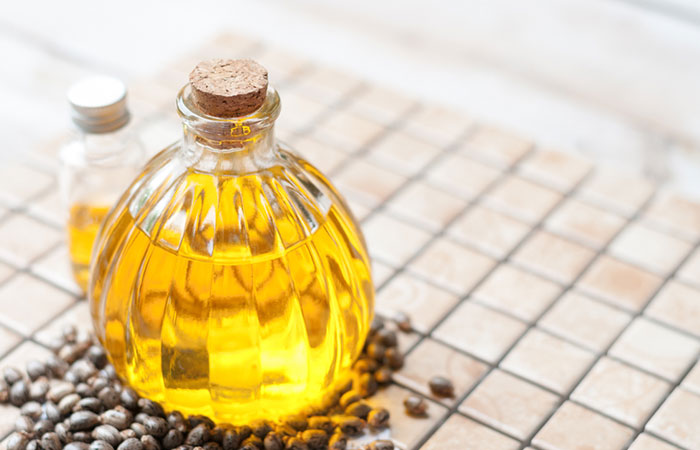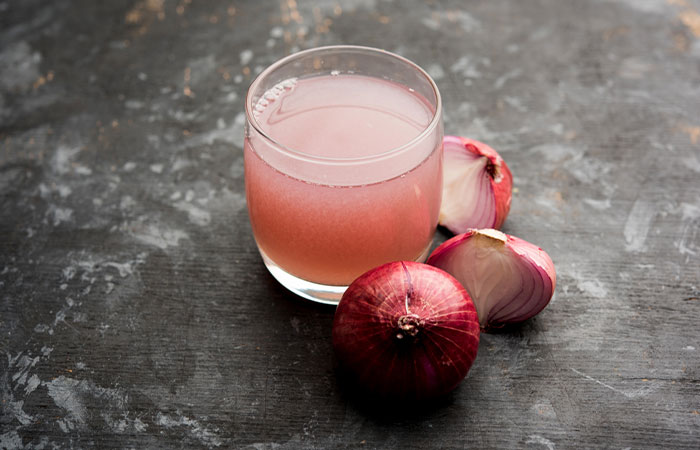A cataract is specified as a thick and over cast location in the lens of your eyes. This happens due to the break down of the protein in your eyes which makes your vision blurred or hazy. While cataracts create gradually in time, they can disrupt your vision and daily activities. Although cataract surgeries are the best means to treat them, a few home remedies can reduce the danger of cataracts with time.
According to the Centers for Condition Control, cataract is the leading source of loss of sight in the US, with 20 million Americans over 40 years old having cataract in one or both eyes ( 1 ). If left without treatment, it might eventually bring about blindness. This article checks out the reasons, signs and symptoms, natural remedy, and foods you can attempt to decrease the danger of developing cataracts. Scroll to find out more.
Did You Know?Individuals with much less than 20/200 vision after using prescription glasses or undertaking medical treatment/surgery in their far better eye are thought about lawfully blind in the United States.
According to a report published in The Lancet Global Health on the root causes of loss of sight and vision disability in 2020, cataract was the major cause of international blindness in all 10-year age groups for ages 50 years and older. Though other reasons, such as glaucoma and diabetic retinopathy were kept in mind, the portion of cataract cases is substantially greater across any age teams.
Cataract: Principle Cause Of Global Blindness
In This Article
Home Remedies To Reduce The Risk Of Cataracts
A healthy way of life and well balanced nutrition are crucial consider maintaining good eye wellness. Additionally, alternate or holistic therapies such as acupuncture and all-natural components might give some remedy for cataract-related signs and symptoms.
1. Castor Oil
Castor oil exhibits powerful antioxidant properties ( 2 ). This may help repair the oxidative damage caused to the eyes. Nevertheless, you need to be cautious concerning selecting high-grade, pure castor oil as contaminations in low-grade castor oil might cause eye inflammation.
You Will Need
1-2 drops of hexane-free i X Natural castor oil that is free of all unsafe and synthetic chemicals, particularly hexane (a substance used for oil seed extraction). castor oil
What You Have To Do
- Pour a drop of castor oil in both your eyes before sleeping.
- Leave the oil overnight.
How Often You Should Do This
Do this once a day for 1-6 months.
Related: Top 11 Castor Oil Benefits For Health, Uses, & Side Effects
2. Vitamins
Preliminary studies show that vitamins C and D may help prevent or slow down the progression of cataracts ( 3 ), ( 4 ). Hence, consume foods rich in these vitamins, like citrus fruits, green leafy vegetables, milk, cheese, eggs, avocados, and almonds.
Note: Consult a doctor before taking additional supplements for these vitamins.
Quick TipConsume fatty fish and subject on your own to guide sunshine for half an hour a day without sunscreen to acquire vitamin D from all-natural resources.
3. Apple Cider Vinegar
Rat studies show that apple cider vinegar has antioxidant properties ( 5 ). Thus, regular consumption of apple cider vinegar may help prevent vision disorders and damage to the retina.
You Will Need
- 1 tablespoon of apple cider vinegar
- 1 glass of warm water
- 1 tablespoon of honey
What You Have To Do
- Add a tablespoon each of honey and apple cider vinegar to a glass of warm water.
- Mix well and consume this mixture daily.
- You can also use carrot juice instead of water.
How Often You Should Do This
Do this once a day.
4. Essential Oils
Frankincense and lavender essential oils exhibit great antioxidant potential ( 6 ), ( 7 ). Hence, they may help improve vision by preventing oxidative damage to the eye.
You Will Need
1-2 drops of frankincense or lavender oil
What You Have To Do
- Rub one or two drops of frankincense or lavender oil between your palms.
- Apply it to closed eyes and leave it on for a few minutes.
- Rinse it off with water.
How Often You Should Do This
Do this 1-2 times a day.
5. Aloe Vera
Aloe vera is an anti-inflammatory and a powerful antioxidant ( 8 ). This herb may provide nourishment to the eyes and decrease or delay the indicators of cataracts and other eye irregularities.
You Will Need
1 tablespoon of aloe vera gel
What You Have To Do
- Extract a tablespoon of fresh aloe vera gel.
- Refrigerate it and apply it to closed eyes.
- Leave it on for 15 to 20 minutes and rinse it off with water.
- You can also consume a cup of aloe vera juice daily.
How Often You Should Do This
Do this a few times daily.
6. Coconut Water
Coconut water is packed with electrolytes i X Online billed minerals found in blood that affect bodily features, such as preserving the level of water and pH level of blood. and has antioxidant potential ( 9 ). This may help in reducing oxidative damage caused to the eyes.
You Will Need
- A few drops of coconut water
- A clean washcloth
What You Have To Do
- Pour a few drops of chilled coconut water into your eyes and close them.
- Place a warm washcloth over your closed eyes.
- Leave it on for 5 to 10 minutes.
How Often You Should Do This
Do this 2 times a day.
Related: 10 Health Benefits Of Coconut Water, Nutrition, & Side Effects
7. Flax seed Oil
Flax seed oil is a rich source of omega-3 fatty acids ( 10 ). Omega-3 fatty acids exhibit antioxidant and anti-inflammatory activities ( 11 ). This may help reduce the risk of eye disorders, like macular degeneration and cataracts.
You Will Need
½-1 tablespoon of cold-pressed flax seed oil
What You Have To Do
Add half to one tablespoon of flax seed oil to your favorite dish or smoothie.
How Often You Should Do This
Do this daily.
8. Garlic
Garlic contains allicin i X An oily natural liquid located in garlic that is responsible for its distinct odor, color and anti-inflammatory properties., which is a solid antioxidant ( 12 ). This may repair oxidative damage in the eyes.
You Will Need
Peeled garlic cloves
What You Have To Do
- Chew on one or two garlic cloves daily.
- You can also add garlic to your favorite dishes if the flavor is too strong for you.
How Often You Should Do This
Do this 1-2 times a day.
9. Ginger
Ginger exhibits anti-inflammatory and antioxidant effects ( 13 ), ( 14 ). These properties may help reduce inflammation and repair oxidative damage to the eyes.
You Will Need
- ½ teaspoon of ginger juice
- ½ teaspoon of lemon juice
- 1 teaspoon of water
- Cotton pads
What You Have To Do
- Mix half a teaspoon each of lemon juice and ginger juice.
- Add a teaspoon of water to this mixture.
- Soak two cotton pads in the mixture and place them over closed eyes.
- Leave them on for 15 to 20 minutes and then take them off.
How Often You Should Do This
Do this 1-2 times a day.
10. Ginkgo Biloba
Gingko biloba has strong antioxidant properties ( 15 ). This may protect the lens from cataract formation.
You Will Need
40-120 mg of ginkgo biloba supplements
What You Have To Do
Take 40-120 mg of ginkgo biloba supplements after consulting your doctor.
How Often You Should Do This
Do this once a day.
11. Green Tea
Green tea is packed with polyphenols i X Natural chemical compounds in plants that protect plants from microbe attack and possess antioxidant properties. that are powerful antioxidants ( 16 ). These polyphenols may help protect the eye lens from further damage and reverse existing cataracts to a certain extent.
You Will Need
- 1 teaspoon of green tea
- 1 cup of water
What You Have To Do
- Add a teaspoon of green tea to a cup of water and bring it to a boil.
- Simmer and strain.
- Allow the tea to cool a little before drinking it.
How Often You Should Do This
Drink this 2 times a day.
Related: 13 Amazing Benefits Of Green Tea And Its Side Effects
12. Honey
Honey is a powerful antioxidant and anti-inflammatory compound ( 17 ). It may help treat existing damage to the eye lens and may also prevent future issues.
You Will Need
- 1 teaspoon of honey
- 1-1 ½ teaspoons of water
What You Have To Do
- Mix the honey with water.
- Pour this solution into your eyes and blink away the excess water.
- You can also consume a teaspoon of honey regularly.
How Often You Should Do This
Do this 1-2 times a day.
13. Lemon Juice
The citric acid present in lemon juice has antioxidant properties ( 18 ). Rat studies showed that it might help reduce the risk of cataracts ( 18 ).
You Will Need
- ½ teaspoon of lemon juice
- 1 teaspoon of water
- Cotton pads
What You Have To Do
- Dilute half a teaspoon of lemon juice with a teaspoon of water.
- Mix well and soak a cotton pad in it.
- Place the cotton pads over closed eyelids and leave them on for about 20 minutes.
- Remove the cotton pads and rinse your eyes with plain water.
How Often You Should Do This
Do this at least once a day.
14. Onion Juice
Onion is a rich source of flavonoids i X A group of plant nutrients in vegetables and fruits that have antioxidant and anti-inflammatory residential properties. and was discovered to stop cataract formation in rat studies ( 19 ).
You Will Need
- 1 teaspoon of fresh onion juice
- 2 teaspoons of water
What You Have To Do
- Add two teaspoons of water to a teaspoon of fresh lemon extract.
- Mix well and pour a drop of this solution into both the eyes.
- Blink away the excess mixture.
How Often You Should Do This
Do this 1-2 times a day.
15. Wheatgrass Juice
Wheat grass is rich in beta-carotene and also exhibits antioxidant properties ( 20 ). This may make wheatgrass an excellent home remedy for reducing the risk of cataracts.
You Will Need
1-2 ounces of fresh wheatgrass juice
What You Have To Do
Consume 1 to 2 ounces of wheatgrass juice daily.
How Often You Should Do This
Do this for a few weeks.
16. Olive Oil
Olive oil is packed with antioxidants ( 21 ). This may help repair damaged lenses and keep the eyes nourished and moisturized ( 22 ).
You Will Need
Olive oil (as required)
What You Have To Do
- Add olive oil to your favorite dishes and salads.
- You can also pour a drop of olive oil into your eyes.
How Often You Should Do This
Do this on a regular basis.
Unscientific proof recommends that making use of turmeric, bilberry, milk thistle, chamomile, marigold, and saffron might help in reducing the danger of cataracts. Furthermore, you might take part in meditation, yoga exercise, acupuncture, and massage therapy to help you manage your cataracts. However, restricted information is available to confirm these cases.
It is important to remember that these home remedies are not verified and may not work for everyone.
Anoop, a blog owner on a mission to address cataracts normally, explore various remedies. He writes, "I attempted several points in the eyes, all separately at different times, not with each other ... Overall, I was quite let down that I had not been able to turn around the cataracts holistically ( i )." In his experience, castor oil, Itone eye decreases, and Cineraria maritima used no alleviation. Triphala tea eyewash revealed guarantee in slowing down development, and Khakhra Mul Ark/Dhak Ki Jadka eye drops arrested the problem yet fell short of reversing it. Regardless of initiatives, he located restricted success in stopping progression however can not turn around the condition.
Faster diagnosis of cataracts may assure faster treatment and can prevent further complications in the eyes.
Diagnosis
Doctors may run the following tests to look for a developing cataract:
- A detailed eye test that includes an eye chart test to examine the remote vision and a tonometry examination to gauge your eye pressure.
- Testing the eye’s sensitivity to glare.
- Testing how you perceive colors.
Along with the treatments, one should additionally consume right. Offered listed below are some foods that might aid postpone the advancement of cataracts.
Best Foods For Cataracts
Considering that excess oxidative anxiety is thought to be among the major reasons for cataracts, foods abundant in antioxidants may aid. Consume foods like:
- Citrus fruits
- Green leafy vegetables
- Guavas
- Bell peppers
- Papaya
- Broccoli
Beta-carotene i X A pigment in plants responsible for the yellow and orange color in veggies and fruits that constitute a vital resource of vitamin A. rich foods might also aid delay or protect against cataract formation. A few of them consist of:
- Carrots
- Sweet potato
- Kale
- Spinach
- Turnip
You may also follow these prevention tips to prevent the formation of cataracts.
Prevention Tips
- Quit smoking.
- Wear shades while out in the sun.
- Limit your alcohol intake.
- Keep a check on the blood sugar levels.
- Get your eyes tested regularly.
- Do not strain your eyes for long periods.
Additionally, consuming a diet regimen abundant in minerals and incorporating exercises in your routine may help in reducing the risk of cataracts ( 23 ).
Cataracts may be classified into different types based on their cause and where they develop.
Types Of Cataracts
The different types of cataracts include:
- Nuclear Cataracts : These are formed in the facility of the lens and may trigger the core of the lens to transform brownish or yellow-colored.
- Cortical Cataracts : These are wedge-shaped and are formed around the nucleus (center) of the lens.
- Posterior Cataracts : These affect the back of the lens and are formed faster than the former types.
- Congenital Cataracts : These cataracts are present at birth or may surface during the child’s first year.
- Secondary Cataracts : Secondary cataracts are often a result of health conditions like diabetes and glaucoma or medications like steroids.
- Traumatic Cataracts : Cataracts that are a result of trauma to the eyes over the years are called traumatic cataracts.
- Radiation Cataracts : As the name suggests, this type of cataract occurs after an individual undergoes radiation for cancer.
Let’s look at the various causes of cataracts and risk factors of the condition.
Causes Of And Risk Factors For Cataracts
Cataracts may occur due to:
- Overproduced oxidants
- Trauma or injury
- Radiation
- Medications like steroids
- Smoking
- Exposure to ultraviolet radiation
- Medical issues like diabetes and glaucoma
- Smoking
Factors that may put a person at a higher risk of developing cataracts include:
- Advancing age
- Alcohol abuse
- Obesity
- High blood pressure
- Past injuries to your eye
- A history of cataracts in your family
The following are some of the most common signs that surface with the development of cataracts.
Signs And Symptoms Of Cataracts
- Blurry vision
- Reduced vision at night.
- Colors look faded.
- Your sensitivity to glare increases.
- Visibility of halos while looking directly at the light.
- Double vision
- The power of your prescription glasses keeps changing.
Surgery is usually recommended to do away with cataracts permanently. The different types of cataract therapy options you can go with are discussed in the next section.
Surgical Treatment Options For Cataracts
Surgery is just one of the most efficient treatments for cataracts. Salam Khan, a blog writer, found out of his cataract condition in his late twenties. In spite of first reluctance, economic issues, and the complicated prospect of surgical procedure, he ultimately chose to go through the treatment. Post-surgery, the makeover was vivid, he composes, "I COULD ULTIMATELY SEE CLEARLY WITH MY BOTH EYES. IT SEEMED LIKE I WAS CHECKING OUT DETAILS IN 3D ( ii ).” The experience marked a profound shift from a lifetime of blurred vision.
- Phacoemulsification : This is a small-incision surgery that involves making a tiny cut on the cornea ( 24 ). Via this cut a little device sends ultrasound waves to break and clear the over cast lens. The specialist may then change the lens and clean the particles.
- Extracapsular Cataract Extraction: It is a large-incision surgery that involves the removal of the lens without damaging it and replacing it with a man-made one ( 25 ).
- Femtosecond Laser Surgery: It involves breaking up the lens and afterwards putting in a new lens. In this surgical procedure, the cosmetic surgeon can improve the cornea to treat blurry vision too ( 26 ).
Post-surgery there are numerous steps to be adhered to as well to guarantee your eyes recover properly. A blog owner, post-cataract surgery, followed a precise eye care routine, applying antibiotic and anti-irritation drops every 6 hours. He notes, "The very first will be made use of for a month, the 2nd for a week ( iii )." Despite the lack of pain, he acknowledged a sensation similar to a sleepless night. His total experience shows a routine, cautious approach to recovery.
Infographic: Types Of Cataract Surgery
While not all situations of cataract call for instant surgical treatment, the condition normally weakens over time and requires the removal of the lens to improve vision. Check out the infographic listed below to understand even more regarding the various treatments offered, what to anticipate after the surgical treatment, and exactly how to care for your eyes in the healing duration.
Illustration: StyleCraze Design Team
Get the high-quality PDF version of this infographic.
Download Share
A cataract in the eye arises from the break down of particular eye proteins and results in fuzzy or cloudy vision. Being a modern vision problem, this problem requires prompt restorative actions to avoid getting worse vision or in some cases, vision loss. The natural remedy for cataracts talked about in this write-up are mainly for delaying the risk and development of the condition and can not cure it. Along with the herbal remedies, a diet regimen abundant in antioxidants can help decrease cataract development. Nevertheless, for treatment alternatives, you require to seek medical support.
Frequently Asked Questions
What is the average age for cataracts?
People aged between 41-60 years and above are frequently affected by cataracts. This clearly shows that progressing age is one of the leading danger factors for this condition.
What will happen if a cataract is left untreated?
Cataracts may cause legal blindness if left untreated. When not treated for longer periods, they may cause total blindness.
Can you remove a cataract without surgery?
Presently, some eye drops are being evaluated for liquifying cataracts without the demand for surgical treatment. Likewise, the all-natural treatments discussed over may help in decreasing the risk of cataracts.
How long does it take to get a cataract removed?
Surgical procedure for cataracts hardly takes 10 mins. Nevertheless, the blurriness after surgical procedure may take anywhere in between 24 hours to also 2 weeks (in rare instances) to clear.
How long can you have a cataract before you go blind?
There is no clear way to determine this. The way cataracts form depends on the client's health and whether the cataracts was because of an injury or an age-related disorder. The majority of cataracts create progressively, so it is vital to schedule routine eye checkups with your ophthalmologist.
Key Takeaways
- Smoking and alcohol consumption can increase the risk of cataracts
- Cataracts cause blurry or double vision.
- Castor oil and apple cider vinegar may help prevent eye degeneration.
- Eat antioxidant-rich foods like citrus fruits and guavas to help delay cataract formation.
- Wear sunglasses whenever you are exposed to sunlight to help prevent cataract.









